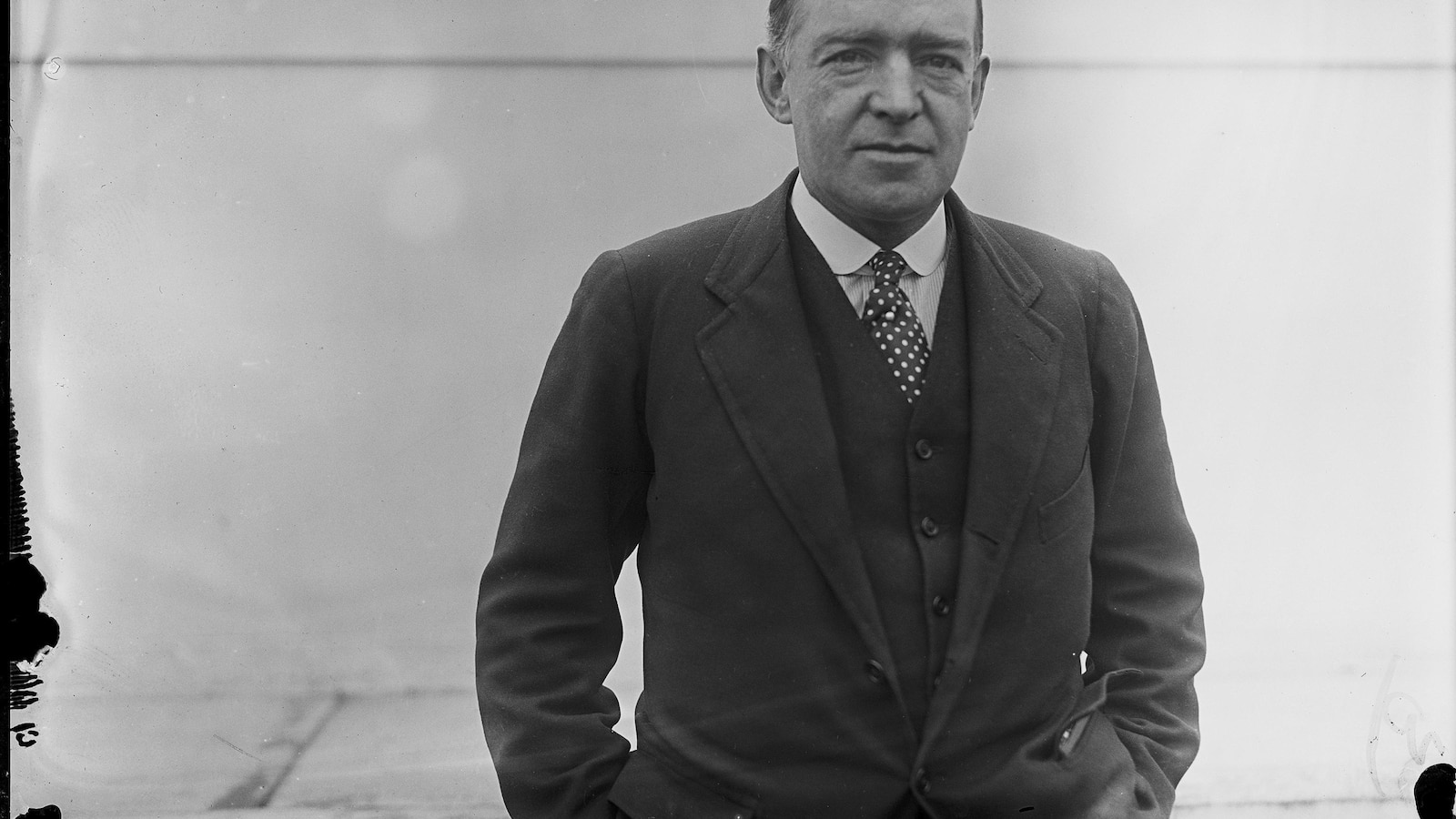
ST. JOHN’S, Newfoundland — The wreck of the last ship belonging to Sir Ernest Shackleton, a famous Irish-born British explorer of Antarctica, has been found off the coast of Labrador in Canada, 62 years after it went missing. The wreck was found by an international team led by the Royal Canadian Geographical Society.
The Quest was found using sonar scans on Sunday evening, sitting on its keel under 390 meters (1,280 feet) of churning, frigid water, the society said. Its towering mast is lying broken beside it, likely cracked off as the vessel was sucked into the depths after it struck ice on May 5, 1962.
Shackleton’s death aboard the ship in 1922 marked the end of what historians consider the “heroic age” of Antarctic exploration. The explorer led three British expeditions to the Antarctic, and he was in the early stages of a fourth when he died. He was 47.
The Quest’s discovery was “profoundly moving,” John Geiger, leader of the Shackleton Quest Expedition said Wednesday . “It’s just such a great story. It links Canada to this most-famous-of-all polar explorers.”
Geiger called it a a very important ship historically.
The Norwegian-built ship, used for Arctic research and sealing after Shackleton’s death, appears to be in “incredible condition,” though it was damaged when it slammed into the seabed, Geiger said.
Now that it has been found, the next step will be sending down remotely operated vehicles to capture images of its remains.
In 2022, researchers discovered another wreck of Shackleton’s. The Endurance was found in 10,000 feet — about 3,000 meters — of icy water, a century after it was swallowed up by Antarctic ice.
A team of marine archaeologists, engineers and other scientists used an icebreaker ship and underwater drones to locate the wreck at the bottom of the Weddell Sea, near the Antarctica Peninsula.
The expedition Endurance22 embarked from Cape Town, South Africa, in early February in a ship capable of breaking through 3-foot (1-meter)-thick ice.
The team, which included more than 100 researchers and crew members, deployed underwater drones that combed the seafloor for two weeks in the area where the ship was recorded to have sunk in 1915.
Shackleton never achieved his ambition to become the first person to cross Antarctica via the South Pole. In fact, he never set foot on the continent during the failed Endurance expedition, though he did visit Antarctica during earlier voyages.
A recent discovery off the coast of Canada has shed new light on the life and adventures of a famous Irish explorer. A team of underwater archaeologists has uncovered the wreckage of a ship believed to have belonged to the renowned explorer, who is known for his daring voyages and contributions to the exploration of the New World.
The shipwreck was found in shallow waters off the coast of Newfoundland, Canada, and is believed to date back to the early 16th century. The discovery has sparked excitement among historians and archaeologists, who are eager to learn more about the life and travels of the explorer.
The identity of the ship’s owner has not been officially confirmed, but experts believe that it may have belonged to a well-known Irish explorer who played a key role in the exploration of North America. The explorer is said to have made several voyages to the New World, charting new territories and establishing trade routes between Europe and the Americas.
The discovery of the shipwreck is significant because it provides valuable insights into the explorer’s life and achievements. By studying the wreckage and artifacts found on board, archaeologists hope to piece together a more complete picture of the explorer’s voyages and the challenges he faced while navigating the treacherous waters of the North Atlantic.
In addition to shedding light on the explorer’s life, the discovery of the shipwreck also highlights the importance of underwater archaeology in uncovering hidden histories and preserving cultural heritage. The wreckage is a treasure trove of historical information, offering clues about the technology, navigation techniques, and daily life aboard a 16th-century ship.
As researchers continue to explore the site and analyze the artifacts recovered from the wreckage, they hope to learn more about the explorer’s travels, interactions with indigenous peoples, and contributions to the exploration of North America. The discovery of the shipwreck is a reminder of the enduring legacy of early explorers and their impact on shaping our understanding of the world.
Overall, the discovery of the shipwreck belonging to a famous Irish explorer off the Canadian coast is an exciting development that promises to deepen our knowledge of history and provide new insights into the adventures of one of the great explorers of the New World.


